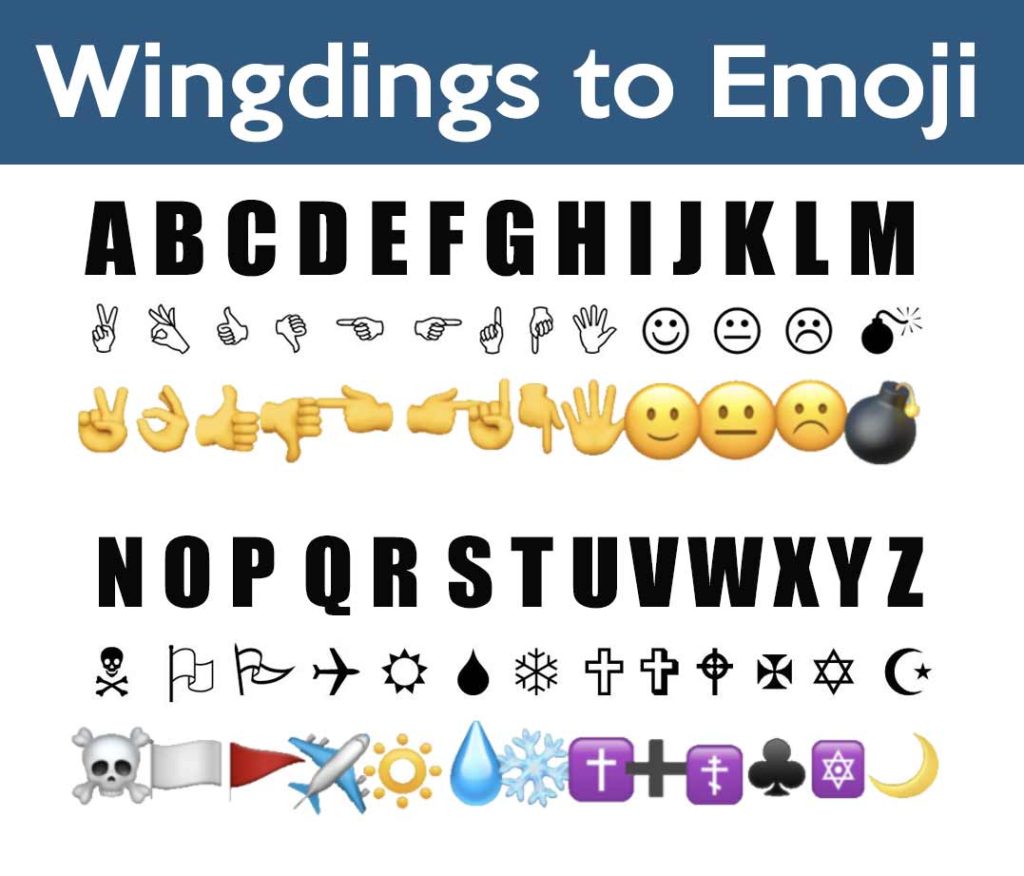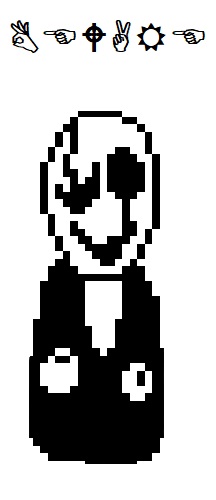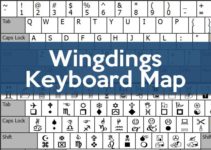Emojis, with the popularization of smartphones, have made a dent in the digital culture of our generation. They are visual, provide context to digital messages, and are easy to use. But they aren’t something totally new. Typing in Wingdings, the first symbol-based typeface, dates back to 1990 when Microsoft turned it into a mass phenomenon. Windings is the predecessor of the popular emojis.
Type in Wingdings:
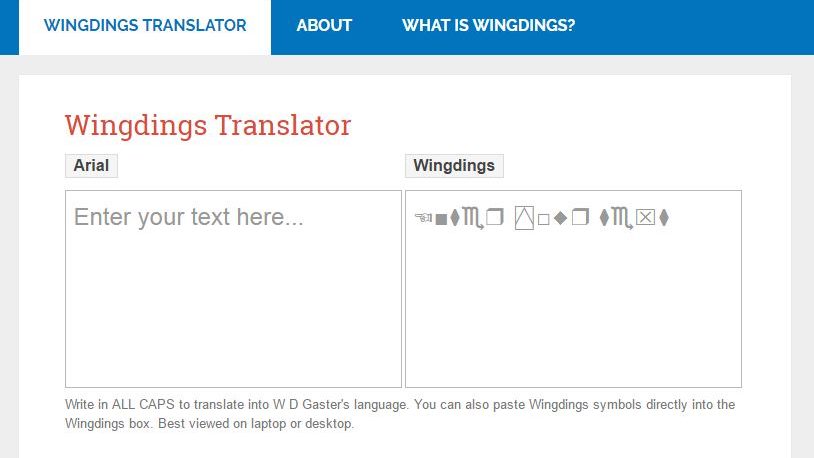
If you are wanting to type in Wingdings it’s probably because you have used this font in the past. Maybe you know Wingdings from Undertale or you remember it from a time when it was easy to find it pre-installed on Windows computers.
Microsoft Word had a Wingdings keyboard map where you could select the Wingdings font and type dozens of different symbols that were related to each key on the keyboard. Suddenly to write for example the word ‘NYC’ was a reference to the 9/11 attacks, and other hidden messages were found, consisting of crosses, gestures of victory, snowflakes and more.
What’s the Point of Wingdings?
To understand the origin of the Wingdings typeface you have to go back to the 90s, when the personal computer was gradually reaching homes and offices. With today’s devices creating and sending images is a very simple task, but it was not like that three decades ago, when images were heavy and of poor quality. A solution that was found to express images was symbols, something that did not weigh much more than a text character.
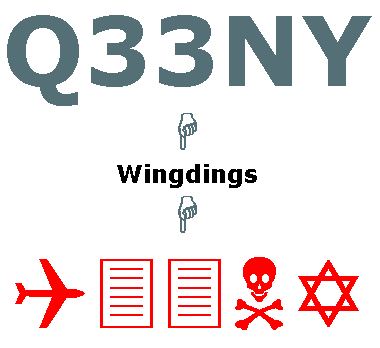
Symbol fonts were born in the last century as a necessity to express themselves quickly and comfortably with the equipment of that time. It wasn’t Wingdings, nor was it in the 90s that we saw the first typeface like that. It was Zapf Dingbats that has the honor of being the first, created in the mid-1980s and distributed with Apple computers as a collection of symbols. However, it was Charles Bigelow and Kris Holmes (creators of the Lucida typeface, mythical for its adaptability to digital environments) who created the first symbols of the style that became popular.
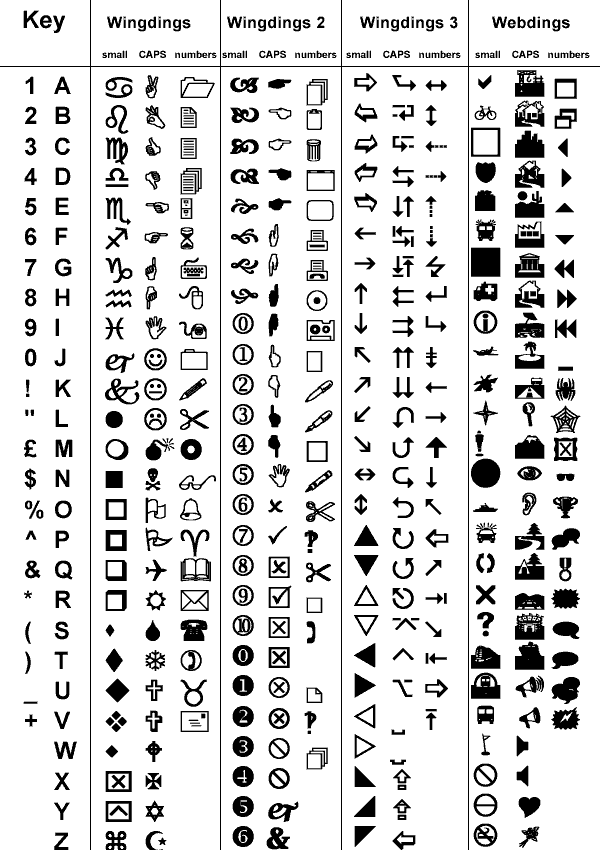
Wingdings is for Communicating with Symbols
Communicating through symbols is something typical of the human being. To go back we can go back to prehistory to find the first expressions in symbols. In fact, it is the origin of the writing that we know today. Today’s alphabets are derived from symbols previously used to express concepts and objects.
Today neither the dingbats nor typing in Wingdings nor any of these varieties have the presence that they had before. Instead we have adopted emojis, which are not characters as such but the end result for the user is the same. Emojis are much more varied and enriched, and with current technology it is possible to create varieties such as different skin tones, for example. Something unimaginable three decades ago.
Wingdings in Popular Culture
Lucida Icons, Lucida Arrows and Lucida Stars had a certain popularity in their early years, but it took Microsoft to turn them into a phenomenon. In 1990 he bought the rights to these three fonts and combined them into a single renamed one: Wingdings. That same year it was included in the latest version of Windows 3.1 just released. Despite the limited space Windows 3.1 had and despite being in beta, to type in Wingdings quickly became a cultural phenomenon.
It became a cultural phenomenon because users used this typeface in a different way than it was conceived. While it was intended to adorn and communicate in combination with text, people found another use for it. Since each symbol was associated with a key on the keyboard, people began to associate each letter with a symbol. Everyone wanted to see what his name meant in Wingdings and conspiracy theories were even born about the typeface and the results it showed with certain words, implying that it contained hidden messages.
In the Undertale videogame, G.D. Gaster talks in Wingdings and he’s likely the only popular character to do so. This is similar to how the characters, Papyrus and Sans, are font-based as well. The Wingdings font used contains hand symbols (which are capital letters from A to I) which, assuming that Gaster is based on this font, could be a possible reference to himself and the way of talking about him in that font. typography.
Fortunately or unfortunately, precisely these theories made Wingdings a cultural phenomenon and popularized among computer users of the 90s and early 21st century. Microsoft later added more and more symbols to its particular typeface. Derivations such as Webdings also emerged, intended to be used on web pages and for browsers to be able to read it.
History of Wingdings
Charles Bigelow and Kris Holmes, after creating the Lucida type family, realized that there was no quick way to express ideas through images. Hence, Lucida Icons, Lucida Arrows and Lucida Stars were born. These three fonts, as their own names indicate, showed symbols, arrows and stars of different kinds. They had a style similar to the Lucida typeface and also matched in size and shape, so the use of symbols could be combined with the text.
Did both Apple and the creators of Lucida come up with this idea out of the blue? Not at all, the use of these symbols in typography dates back to the Middle Ages. Medieval manuscripts used different symbols to decorate the external parts of the body of a page. Although at first they were made by hand, with the passage of time and the arrival of the printing press, specific symbols were created in types (the block of the printing press that impregnates the ink and has a drawn letter) that automated this work. They were the first emojis.
If we look at the symbols created for these variants of Lucida we will see that there are a multitude of floral motifs, pointing hands and religious symbols. They were inspired by the dingbats of the Middle Ages. Dingbats is the name given to these symbols, hence the derivation to Zapf Dingbats or Wingdings. But its creators in addition to adapting these dingbats also added common symbols of the time such as the mouse, the keyboard, the PC or a mailbox. And of course, the faces with different smiles.

